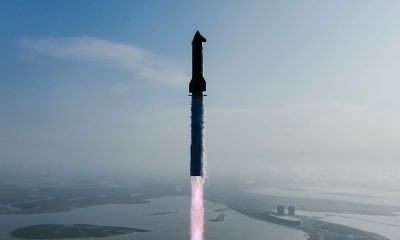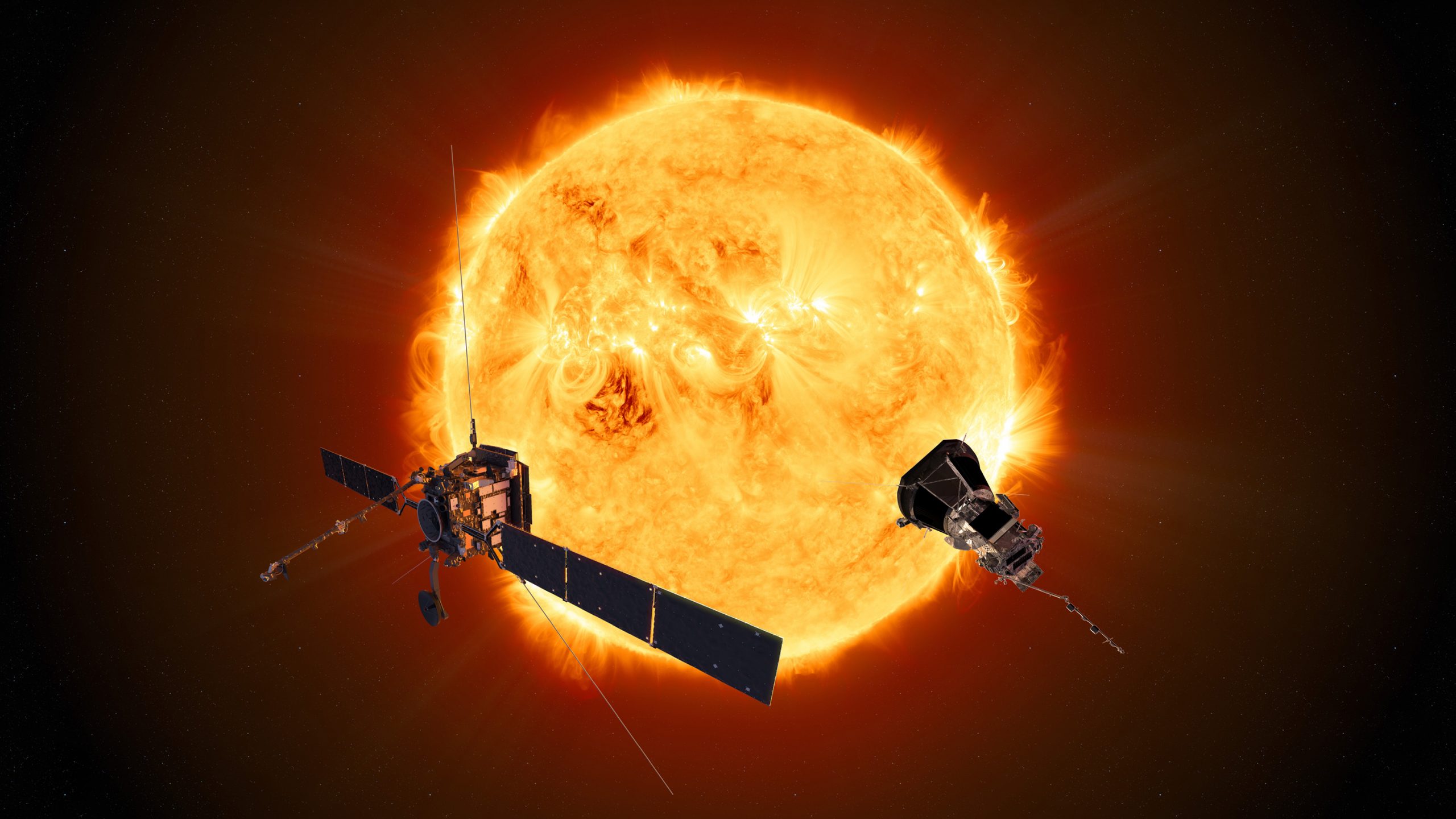

Space
Solar Orbiter heads to the sun in mission to unravel its mysteries, takes first space measurements
The European Space Agency’s (ESA) Solar Orbiter spacecraft is traveling through the cosmos. Its destination: the inner solar system. The 3,900-lb. (1,800-kg) spacecraft will work in tandem with NASA’s Parker Solar Probe to unravel solar mysteries that have puzzled scientists for decades.
The probe will spend the next two years cruising towards the sun and using both Venus and the Earth to slingshot itself out of the ecliptic plane — the area of space where all planets orbit. This vantage point will allow the spacecraft to eventually look down upon the sun’s polar regions and snap the very first images of this crucial area.
“We believe this area holds the keys to unraveling the mysteries of the sun’s activity cycle,” Daniel Müller, the mission’s ESA project scientist, said in a prelaunch science briefing on Feb. 7.
The Solar Orbiter and its suite of 10 specialized instruments will act as a mobile laboratory in space, tracking eruptions of solar materials from their origin on the surface of the sun, out into space, and all the way down to Earth.
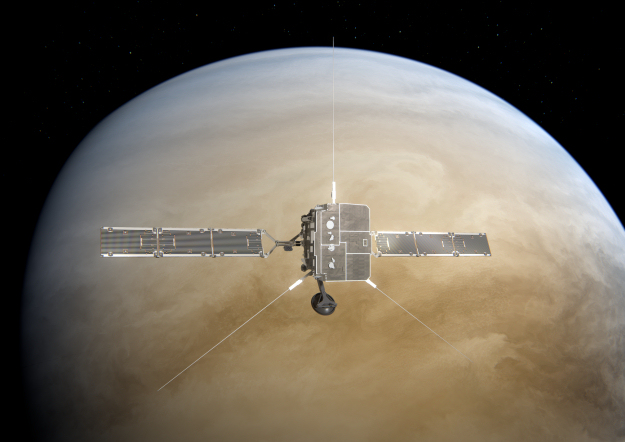
“Our entire solar system is governed by the activity that comes from the sun,” Nicky Fox, director of NASA’s Heliophysics Division said during the mission’s science briefing. “There’s a continually streaming kind of soup of energetic particles that moves away from the sun and bathes all the planets. We call that the solar wind.”
Together, the solar wind and the sun’s magnetic field create a huge bubble known as the heliosphere, which shields the Earth from powerful interstellar radiation called cosmic rays.
Coronal mass ejections (CMEs) are energetic eruptions of solar material and when they make it to Earth, the solar particles can interact with our planet’s magnetic field to produce powerful electromagnetic fluctuations. Known as geomagnetic storms, they are troublesome because they’re known to disrupt technologies like communications systems and even power grids.
Additionally, they can also be dangerous to astronauts and satellites in space. Solar Orbiter will help mitigate damages from these types of storms by helping scientists better predict when they might happen.
Solar Orbiter launched atop an Atlas V rocket on Feb. 9 at 11:03 p.m. EST (0403 GMT on Feb. 10). About an hour after liftoff, the spacecraft separated from the rocket’s upper stage as planned, extended its solar arrays and sent a signal back to Earth that it had power.
The spacecraft then spent the next several days deploying its communication antennas as well as its instrument boom.

Its first three months are what’s known as a commissioning phase, during which ground controllers will check out the onboard instruments to make sure everything is in working order. Two years from now, the spacecraft will be close enough to take its first detailed measurements of the sun, but we didn’t have to wait that long for the first bits of science data to come in.
Solar Orbiter carries ten scientific instruments, four in situ (meaning they measure the environment around the spacecraft) and six remote-sensing imagers (which will measure the sun’s properties). The majority of the in situ instruments are located on a 4.4-m-long extendable boom. They study the electromagnetic characteristics of the solar wind, as well as the stream of charged particles flowing from the Sun.
“We measure magnetic fields thousands of times smaller than those we are familiar with on Earth,” Tim Horbury, principal investigator for the magnetometer (MAG) instrument on the Solar Orbiter, said in the statement. “Even currents in electrical wires make magnetic fields far larger than what we need to measure. That’s why our sensors are on a boom, to keep them away from all the electrical activity inside the spacecraft.”
Designed to measure the strength and direction of the magnetic field, the MAG (which is composed of two sensors) was the first instrument to send back data.

“The data we received shows how the magnetic field decreases from the vicinity of the spacecraft to where the instruments are actually deployed,” Horbury said in the same statement. “This is an independent confirmation that the boom actually deployed and that the instruments will, indeed, provide accurate scientific measurements in the future.”
The boom is a pole made constructed out of titanium and carbon-fiber that houses three instruments, which are so sensitive that they need to be kept away from the main body of the spacecraft to avoid potential electromagnetic disturbances.
“Measuring before, during, and after the boom deployment helps us to identify and characterize signals that are not linked to the solar wind, such as perturbations coming from the spacecraft platform and other instruments,” Matthieu Kretzschmar, lead co-investigator of the high-frequency magnetometer of the Radio and Plasma Waves instrument (RPW) instrument, which is also located on the boom and will study properties of the solar wind.
The team will continue to calibrate the spacecraft’s suite of instruments and will begin collecting official science data as early as May.
News
SpaceX Ax-4 Mission prepares for ISS with new launch date
SpaceX, Axiom Space, and NASA set new launch date for the Ax-4 mission after addressing ISS & rocket concerns.
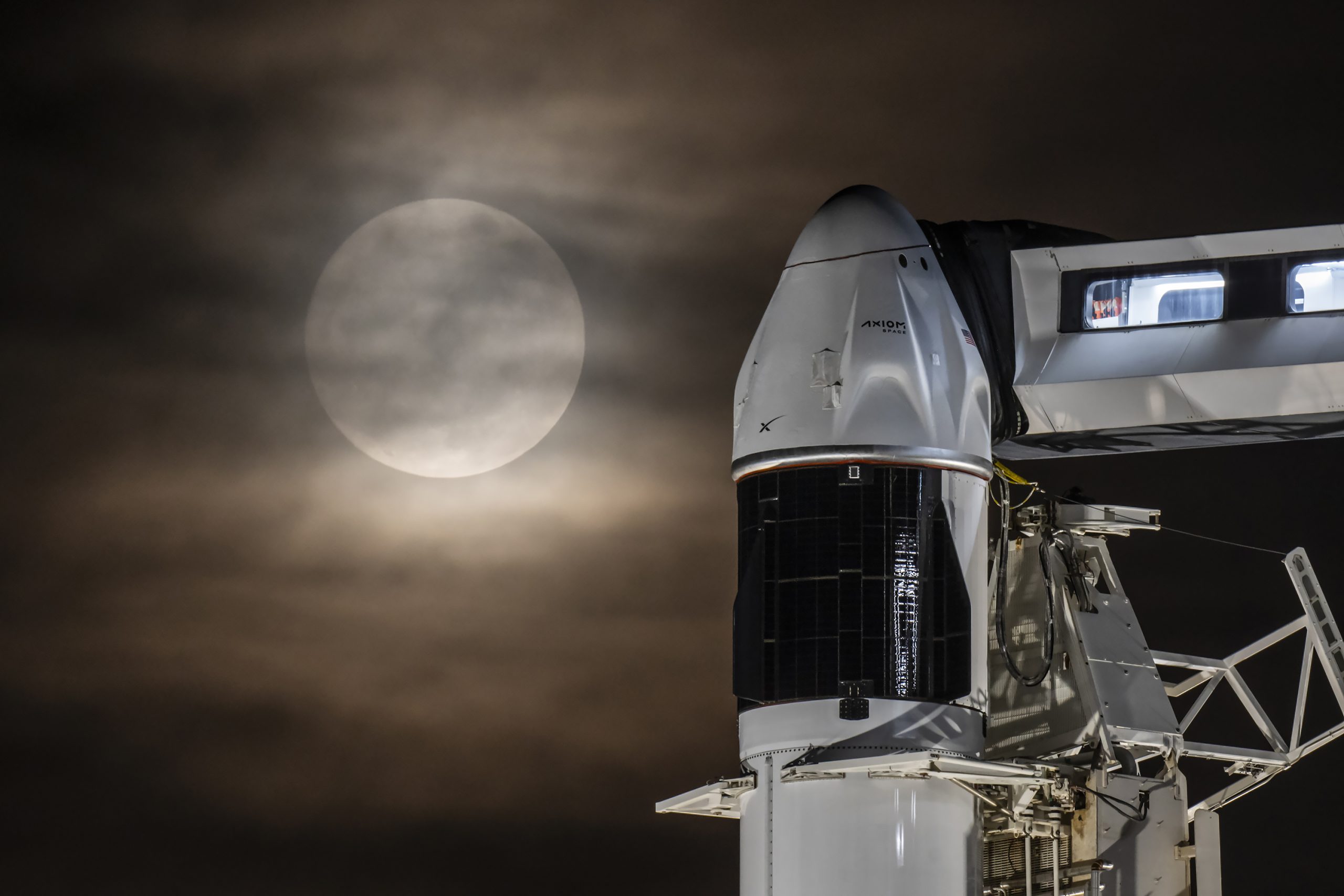
SpaceX is preparing for a new launch date for the Ax-4 mission to the International Space Station (ISS).
SpaceX, Axiom Space, and NASA addressed recent technical challenges and announced a new launch date of no earlier than Thursday, June 19, for the Ax-4 mission. The delay from June 12 allowed teams to assess repairs to small leaks in the ISS’s Zvezda service module.
NASA and Roscosmos have been monitoring leaks in the Zvezda module’s aft (back) segment for years. However, stable pressure could also result from air flowing across the hatch seal from the central station. As NASA and its partners adapt launch schedules to ensure station safety, adjustments are routine.
“Following the most recent repair, pressure in the transfer tunnel has been stable,” a source noted, suggesting the leaks may be sealed.
“By changing pressure in the transfer tunnel and monitoring over time, teams are evaluating the condition of the transfer tunnel and the hatch seal between the space station and the back of Zvezda,” the source added.
SpaceX has also resolved a liquid oxygen leak found during post-static fire inspections of the Falcon 9 rocket, completing a wet dress rehearsal to confirm readiness. The Ax-4 mission is Axiom Space’s fourth private astronaut trip to the ISS. It will launch from NASA’s Kennedy Space Center in Florida on a Falcon 9 rocket with a new Crew Dragon capsule.
“This is the first flight for this Dragon capsule, and it’s carrying an international crew—a perfect debut. We’ve upgraded storage, propulsion components, and the seat lash design for improved reliability and reuse,” said William Gerstenmaier, SpaceX’s vice president of build and flight reliability.
The Ax-4 mission crew is led by Peggy Whitson, Axiom Space’s director of human spaceflight and former NASA astronaut. The Ax-4 crew includes ISRO astronaut Shubhanshu Shukla as pilot, alongside mission specialists Sławosz Uznański-Wiśniewski from Poland and Tibor Kapu from Hungary. The international team underscores Axiom’s commitment to global collaboration.
The Ax-4 mission will advance scientific research during its ISS stay, supporting Axiom’s goal of building a commercial space station. As teams finalize preparations, the mission’s updated launch date and technical resolutions position it to strengthen private space exploration’s role in advancing space-based innovation.
News
Starlink India launch gains traction with telecom license approval
Starlink just secured its telecom license in India! High-speed satellite internet could go live in 2 months.
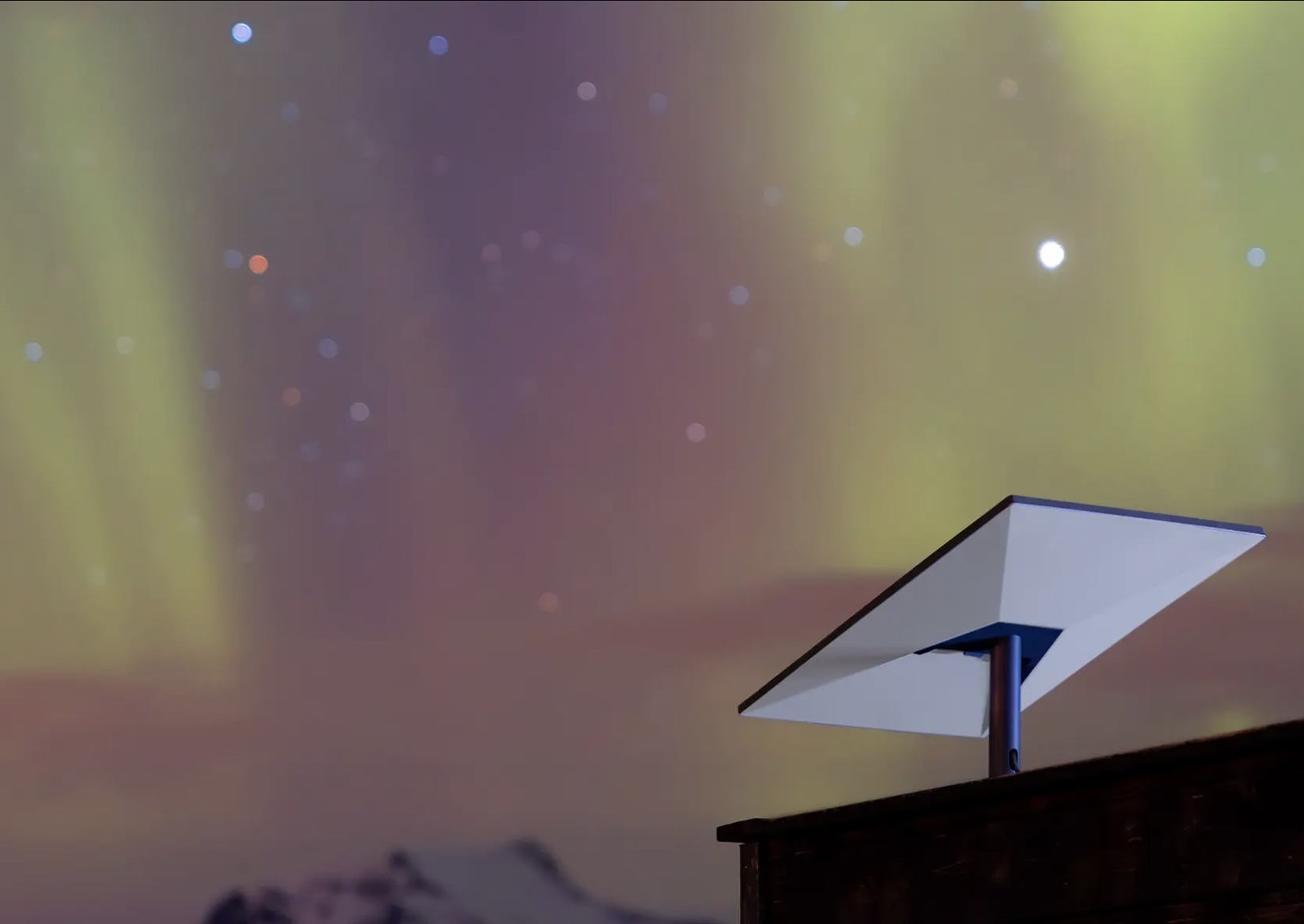
Starlink India’s launch cleared a key regulatory hurdle after securing a long-awaited license from the country’s telecom ministry. Starlink’s license approval in India paves the way for commercial operations to begin, marking a significant milestone after a three-year wait.
The Department of Telecommunications granted Starlink a Global Mobile Personal Communication by Satellite (GMPCS) license, enabling it to roll out its high-speed internet service. Local reports hinted that Starlink plans to launch its services within the next two months. Starlink India’s services are expected to be priced at ₹3,000 per month for unlimited data. Starlink service would require a ₹33,000 hardware kit, including a dish and router.
“Starlink is finally ready to enter the Indian market,” sources familiar with the rollout plans confirmed, noting a one-month free trial for new users.
Starlink’s low-Earth orbit satellite network promises low-latency, high-speed internet that is ideal for rural India, border areas, and hilly terrains. With over 7,000 satellites in orbit and millions of global users, Starlink aims to bridge India’s digital divide, especially in areas with limited traditional broadband.
Starlink has forged distribution partnerships with Indian telecom giants Reliance Jio and Bharti Airtel to streamline deployment and retail logistics. However, the company still awaits spectrum allocation and final clearances from India’s space regulator, IN-SPACe, and national security agencies before its full launch, expected before August 2025.
India’s satellite internet market is becoming increasingly competitive, with Starlink joining rivals like OneWeb and Jio Satellite Communications. While Starlink positions itself as a premium offering, its entry has sparked debate among domestic telecom operators over spectrum pricing.
Local reports noted that other players in the industry have raised concerns over the lower regulatory fees proposed for satellite firms compared to terrestrial operators, highlighting tensions in the sector.
Starlink India’s launch represents a transformative step toward expanding internet access in one of the world’s largest markets. Starlink could redefine connectivity for millions in underserved regions by leveraging its advanced satellite technology and strategic partnerships. As the company navigates remaining regulatory steps, its timely rollout could set a new standard for satellite internet in India, intensifying competition and driving innovation in the telecom landscape.
Elon Musk
SpaceX to decommission Dragon spacecraft in response to Pres. Trump war of words with Elon Musk
Elon Musk says SpaceX will decommission Dragon as a result of President Trump’s threat to end his subsidies and government contracts.
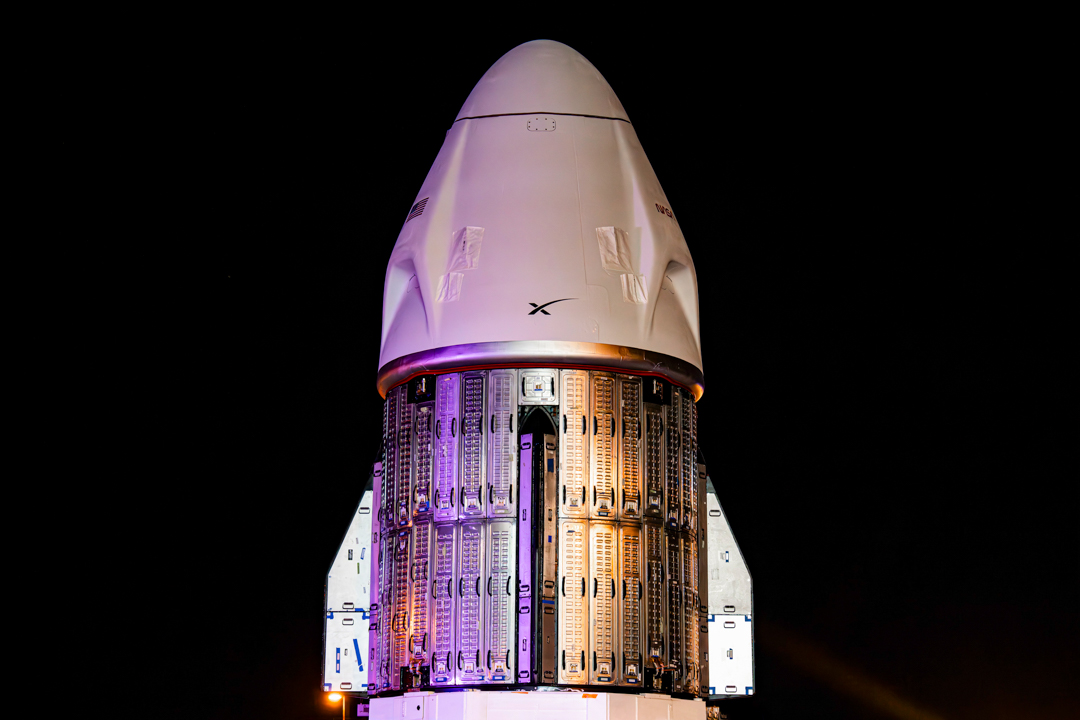
SpaceX will decommission its Dragon spacecraft in response to the intense war of words that President Trump and CEO Elon Musk have entered on various social media platforms today.
President Trump and Musk, who was once considered a right-hand man to Trump, have entered a vicious war of words on Thursday. The issues stem from Musk’s disagreement with the “Big Beautiful Bill,” which will increase the U.S. federal deficit, the Tesla and SpaceX frontman says.
How Tesla could benefit from the ‘Big Beautiful Bill’ that axes EV subsidies
The insults and threats have been brutal, as Trump has said he doesn’t know if he’ll respect Musk again, and Musk has even stated that the President would not have won the election in November if it were not for him.
President Trump then said later in the day that:
“The easiest way to save money in our Budget, Billions and Billions of Dollars, is to terminate Elon’s Government Subsidies and Contracts. I was always surprised that Biden didn’t do it!”
Musk’s response was simple: he will decommission the SpaceX capsule responsible for transporting crew and cargo to the International Space Station (ISS): Dragon.
🚨 Elon says Dragon will be decommissioned immediately due to President Trump’s threats to terminate SpaceX’s government contracts https://t.co/XNB0LflZIy
— TESLARATI (@Teslarati) June 5, 2025
Dragon has completed 51 missions, 46 of which have been to the ISS. It is capable of carrying up to 7 passengers to and from Earth’s orbit. It is the only spacecraft that is capable of returning vast amounts of cargo to Earth. It is also the first private spacecraft to take humans to the ISS.
The most notable mission Dragon completed is one of its most recent, as SpaceX brought NASA astronauts Butch Wilmore and Suni Williams back to Earth after being stranded at the ISS by a Boeing Starliner capsule.
SpaceX’s reluctance to participate in federally funded projects may put the government in a strange position. It will look to bring Boeing back in to take a majority of these projects, but there might be some reluctance based on the Starliner mishap with Wilmore and Williams.
SpaceX bails out Boeing and employees are reportedly ‘humiliated’
-

 Elon Musk4 days ago
Elon Musk4 days agoTesla investors will be shocked by Jim Cramer’s latest assessment
-

 News1 week ago
News1 week agoTesla Robotaxi’s biggest challenge seems to be this one thing
-

 Elon Musk2 weeks ago
Elon Musk2 weeks agoFirst Look at Tesla’s Robotaxi App: features, design, and more
-

 News2 weeks ago
News2 weeks agoSpaceX and Elon Musk share insights on Starship Ship 36’s RUD
-

 News2 weeks ago
News2 weeks agoWatch Tesla’s first driverless public Robotaxi rides in Texas
-

 News1 week ago
News1 week agoWatch the first true Tesla Robotaxi intervention by safety monitor
-

 News2 weeks ago
News2 weeks agoTesla has started rolling out initial round of Robotaxi invites
-

 Elon Musk2 weeks ago
Elon Musk2 weeks agoTesla to launch in India in July with vehicles already arriving: report










